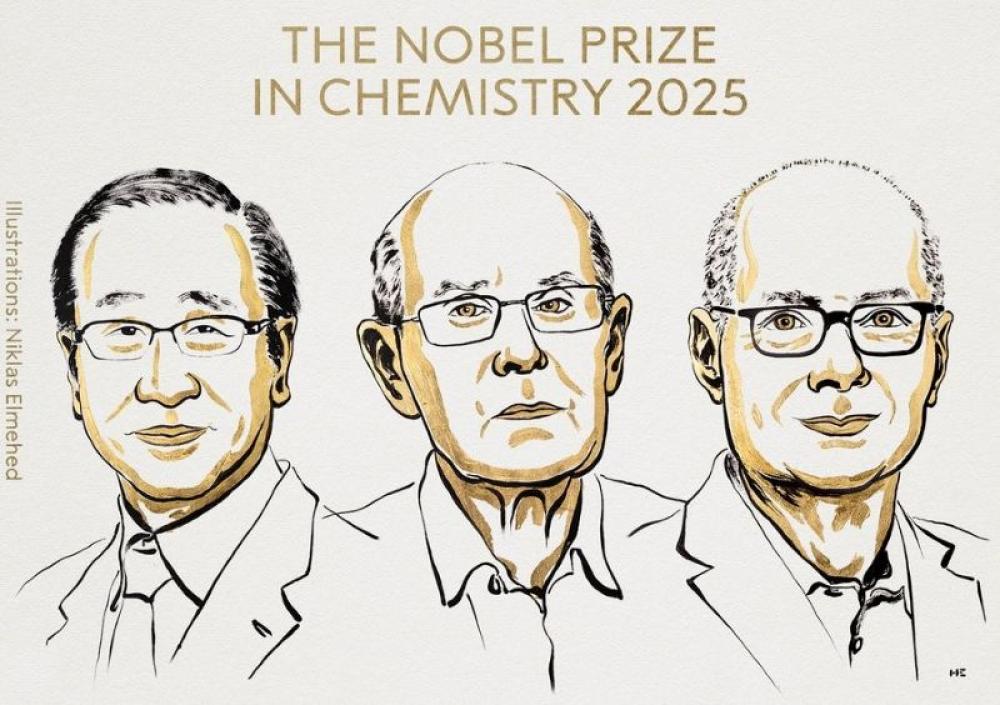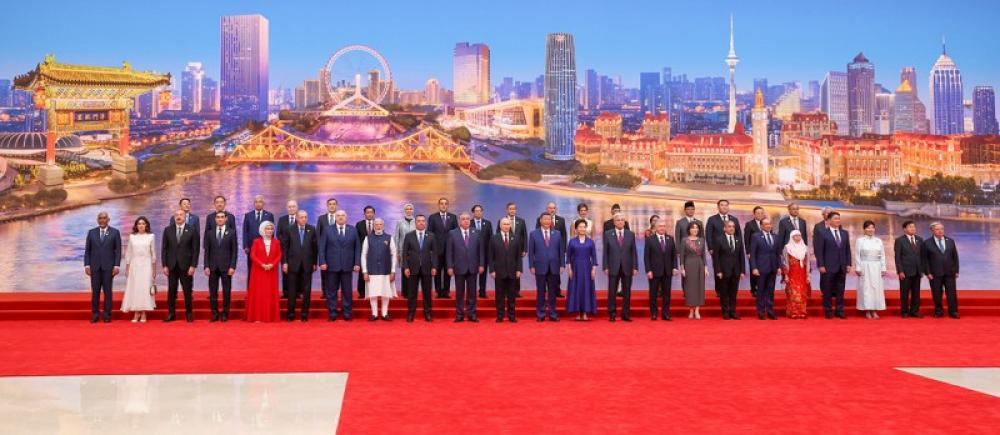Just Earth News | @justearthnews | 08 Oct 2025, 07:34 am Print
 Nobel Prize
Nobel Prize Trio won Nobel Prize in Chemistry. Photo: The Nobel Prize/Niklas Elmehed/X
Scientists Susumu Kitagawa, Richard Robson and Omar Yaghi have won the Nobel Prize in Chemistry for developing a new form of molecular architecture.
In their constructions, metal ions function as cornerstones that are linked by long organic (carbon-based) molecules.
"Together, the metal ions and molecules are organised to form crystals that contain large cavities. These porous materials are called metal–organic frameworks (MOF)," the award giving organisation said in a statement.
By varying the building blocks used in the MOFs, chemists can design them to capture and store specific substances. MOFs can also drive chemical reactions or conduct electricity.
“Metal–organic frameworks have enormous potential, bringing previously unforeseen opportunities for custom-made materials with new functions,” says Heiner Linke, Chair of the Nobel Committee for Chemistry.
It all started in 1989, when Richard Robson tested utilising the inherent properties of atoms in a new way.
He combined positively charged copper ions with a four-armed molecule; this had a chemical group that was attracted to copper ions at the end of each arm.
When they were combined, they bonded to form a well-ordered, spacious crystal. It was like a diamond filled with innumerable cavities.
Robson immediately recognised the potential of his molecular construction, but it was unstable and collapsed easily.
However, Susumu Kitagawa and Omar Yaghi provided this building method with a firm foundation; between 1992 and 2003 they made, separately, a series of revolutionary discoveries.
Kitagawa showed that gases can flow in and out of the constructions and predicted that MOFs could be made flexible.
Yaghi created a very stable MOF and showed that it can be modified using rational design, giving it new and desirable properties.
Following the laureates’ groundbreaking discoveries, chemists have built tens of thousands of different MOFs.
Some of these may contribute to solving some of humankind’s greatest challenges, with applications that include separating PFAS from water, breaking down traces of pharmaceuticals in the environment, capturing carbon dioxide or harvesting water from desert air.
- Qatar Airways passenger dies choking after being told to ‘eat around’ meat instead of a vegetarian meal
- Google unveils Gemini 2.5 Computer Use, an AI model that can navigate websites like humans
- OpenAI teams up with AMD to deploy 6 gigawatts of high-performance GPUs
- U.S.-based scientists John Clarke, Michel Devoret and John Martinis win Nobel Prize in Physics
- Florida teen arrested for asking ChatGPT how to kill a classmate on school computer






